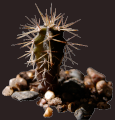DMT-Nexus member
Posts: 554 Joined: 22-Apr-2018 Last visit: 09-Feb-2020
|
Ingredients
28oz coconut oil
1.5 cups of water
150g lye
3-4oz honey
few spoonfuls of cinnamon
Process
mix your lye into your distilled water
mix lye solution with coconut oil
stir
after a while of stirring add in honey and cinnamon
stir more
after stirring for a long time the solution will become like pudding
pour into molds and let sit for 24-48 hours in a dry place
pop out of molds and let sit for 15-30 days to cure
|
|
|
|
|

DMT-Nexus member
Posts: 337 Joined: 01-Dec-2017 Last visit: 09-Apr-2024 Location: Virtually on earth, Really everywhere
|
Hey dude thank you for the recipe, You may know but it could be precised, there are online saponification calculator that can help to make a recipe with some attribute in function of ingredients. We can do a soap more hard, more cleaning, more smooth depending of the ingredients an oil type used. I like this one http://soapcalc.net/calc/soapcalcwp.asp as you have a lot of choice for the ingredients. Another advice while making soap, is uuntil you put your soap paste in your mold, let it sit for 24H until reaction finished, then you may let your unmolded soap above 30 days for drying. This way you saop may have nearly 0 harmfull component and fully safe for your skin. Cheers
|
|
|

DMT-Nexus member

Posts: 634 Joined: 02-Dec-2017 Last visit: 29-Jun-2025 Location: The unfeeling, dark chrysalis of matter
|
Ok I'm definitely making some soap...lately I've been giving a lot of money buying organic soap with olive oil and lemon oil, and I feel like making my own would definitely be the better option. Thanks to pastanostra and Cactus Man! 
|
|
|
DMT-Nexus member
Posts: 554 Joined: 22-Apr-2018 Last visit: 09-Feb-2020
|
Its a general rule to let the soap cure (oxidize) for a month before use to get the most out of it. 
|
|
|
DMT-Nexus member
Posts: 554 Joined: 22-Apr-2018 Last visit: 09-Feb-2020
|
Currently attempting to make my first batch of organic coconut lavender liquid soap. If the results are good I will post the recipe 
|
|
|

DMT-Nexus member
Posts: 105 Joined: 17-Feb-2018 Last visit: 13-May-2022 Location: UK
|
This is great, thanks! 
|
|
|

DMT-Nexus member

Posts: 634 Joined: 02-Dec-2017 Last visit: 29-Jun-2025 Location: The unfeeling, dark chrysalis of matter
|
Cactus Man wrote:Currently attempting to make my first batch of organic coconut lavender liquid soap. If the results are good I will post the recipe  Fingers crossed bro, can't wait! I've always found liquid soap more convenient than the solid one. Quote:You must be shapeless, formless, like water. When you pour water in a cup, it becomes the cup. When you pour water in a bottle, it becomes the bottle. When you pour water in a teapot, it becomes the teapot. Water can drip and it can crash. Become like water my friend.
|
|
|

DMT-Nexus member
Posts: 83 Joined: 15-Nov-2015 Last visit: 26-Mar-2021 Location: 13th dimension
|
It is easy to mix and cook your hard homemade soap in some water to form a kind of gel (liquid soap). If you use potassium hydroxide instead of sodium hydroxide you will get a soft cream like soap (proportions are different). If you put your mold in freezer it will just slow down the reaction. I don't see the utility. Take care of the proportions 
|
|
|
DMT-Nexus member
Posts: 554 Joined: 22-Apr-2018 Last visit: 09-Feb-2020
|
Yea you are right I ended up realizing the freezer is not as helpful as I had first thought.
Been experimenting with different soap recipes for a bit now and have been getting better/more experienced at soap making.
|
|
|
DMT-Nexus member
Posts: 554 Joined: 22-Apr-2018 Last visit: 09-Feb-2020
|
Wanted to mention be careful to only use a small amount of essential oils when adding them to soaps, I ended up using a bit too much with my lavender batch and it didnt cure very well, it was still effective as soap but didnt come out as well as some of the batches I did without any essential oils.
|
|
|

Boundary condition

Posts: 8617 Joined: 30-Aug-2008 Last visit: 29-Nov-2025 Location: square root of minus one
|
If anyone out there is thinking of making liquid soap, and really wants to be as organic as possible, you can make your own potash from wood ashes and roasted snail shells. These two will react to form crude potassium hydroxide once water is added. I was discussing this with an organic soap maker earlier today, at the exact time you posted, Cactus Man! Crazy synchronicity  “There is a way of manipulating matter and energy so as to produce what modern scientists call 'a field of force'. The field acts on the observer and puts him in a privileged position vis-à-vis the universe. From this position he has access to the realities which are ordinarily hidden from us by time and space, matter and energy. This is what we call the Great Work." ― Jacques Bergier, quoting Fulcanelli
|
|
|
DMT-Nexus member
Posts: 554 Joined: 22-Apr-2018 Last visit: 09-Feb-2020
|
Ahh yes! Synchronicity is what I'm all about.  I never made soap with potash but that indeed is quite similar to lye. Been sharing my soap with tons of people to this day. 
|
|
|

DMT-Nexus member
Posts: 340 Joined: 19-Nov-2018 Last visit: 18-Sep-2025
|
downwardsfromzero wrote:If anyone out there is thinking of making liquid soap, and really wants to be as organic as possible, you can make your own potash from wood ashes and roasted snail shells. These two will react to form crude potassium hydroxide once water is added. I was discussing this with an organic soap maker earlier today, at the exact time you posted, Cactus Man! Crazy synchronicity  Is this somehow preferable to just soaking wood ashes and using the water? It seems like more effort for the same result.
|
|
|

DMT-Nexus member

Posts: 2096 Joined: 20-Nov-2009 Last visit: 12-Nov-2023
|
RoundAbout wrote:downwardsfromzero wrote:If anyone out there is thinking of making liquid soap, and really wants to be as organic as possible, you can make your own potash from wood ashes and roasted snail shells. These two will react to form crude potassium hydroxide once water is added. I was discussing this with an organic soap maker earlier today, at the exact time you posted, Cactus Man! Crazy synchronicity  Is this somehow preferable to just soaking wood ashes and using the water? It seems like more effort for the same result. Same result as mixing wood ashes and sea shells ? you mean skipping sea shells cause thats the only difference you give here ? Smell like tea n,n spirit !
Toke the toke, and walk the walk !
|
|
|

DMT-Nexus member
Posts: 340 Joined: 19-Nov-2018 Last visit: 18-Sep-2025
|
rOm wrote:Same result as mixing wood ashes and sea shells ? you mean skipping sea shells cause thats the only difference you give here ? Yeah. Wood ashes are mainly calcium carbonate, some of which in calcinated to lime (CaO). Roasting snail shells (which are also just calcium carbonate) also calcinates them to lime. Soaking wood ashes converts the potash (K2CO3) present in the ash to KOH in solution (precipitating CaCO3... salt metathesis reaction). Evaporating it produces potash again. You can react the potash with lime (e.g. from the roast snail shells) to produce actual KOH by evaporating it (again precipitating CaCO3, which you would remove the liquid along with the shell material from before evaporating) to use later though. I imagine it's a lot less crude to do it this way (especially important if you're actually trying to be exact), and you could store the KOH much more conveniently than ash water. I guess I kind of answered my own question (I think). I've used ash water and fat to wash dishes when camping, so that's what my mind went to initially rather than a nice household product.
|
|
|

Boundary condition

Posts: 8617 Joined: 30-Aug-2008 Last visit: 29-Nov-2025 Location: square root of minus one
|
RoundAbout wrote:downwardsfromzero wrote:If anyone out there is thinking of making liquid soap, and really wants to be as organic as possible, you can make your own potash from wood ashes and roasted snail shells. These two will react to form crude potassium hydroxide once water is added. I was discussing this with an organic soap maker earlier today, at the exact time you posted, Cactus Man! Crazy synchronicity  Is this somehow preferable to just soaking wood ashes and using the water? It seems like more effort for the same result. The only extra effort is collecting the snail shells - and, I suppose, throwing them into the fire while it's burning. The additional amount of calcium hydroxide from the shells makes for a greater conversion from carbonate to hydroxide. Sea shells are similar, and usually thicker. Typically, one would collect the shells while doing something else - gardening or lounging on the beach - so the extra effort is pretty minimal. “There is a way of manipulating matter and energy so as to produce what modern scientists call 'a field of force'. The field acts on the observer and puts him in a privileged position vis-à-vis the universe. From this position he has access to the realities which are ordinarily hidden from us by time and space, matter and energy. This is what we call the Great Work." ― Jacques Bergier, quoting Fulcanelli
|
|
|

DMT-Nexus member
Posts: 340 Joined: 19-Nov-2018 Last visit: 18-Sep-2025
|
downwardsfromzero wrote:The only extra effort is collecting the snail shells - and, I suppose, throwing them into the fire while it's burning. The additional amount of calcium hydroxide from the shells makes for a greater conversion from carbonate to hydroxide. Sea shells are similar, and usually thicker.
Typically, one would collect the shells while doing something else - gardening or lounging on the beach - so the extra effort is pretty minimal. I suppose my question arose partially from not realizing that a shell set in a fire is heated more effectively than the ash layer below it. I only see shells in what you might call swamps, but egg shells work also. I can't think of a super easy way to heat the ash otherwise (other than using/making something to contain the ash, i.e. a crucible).
|